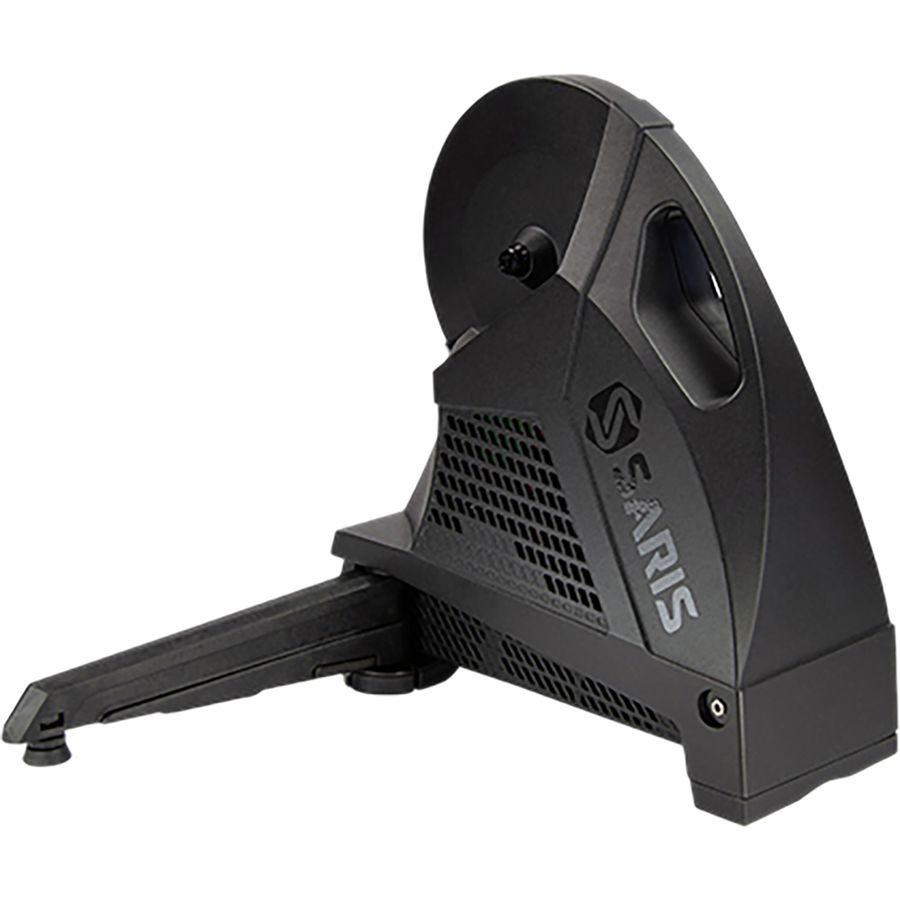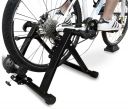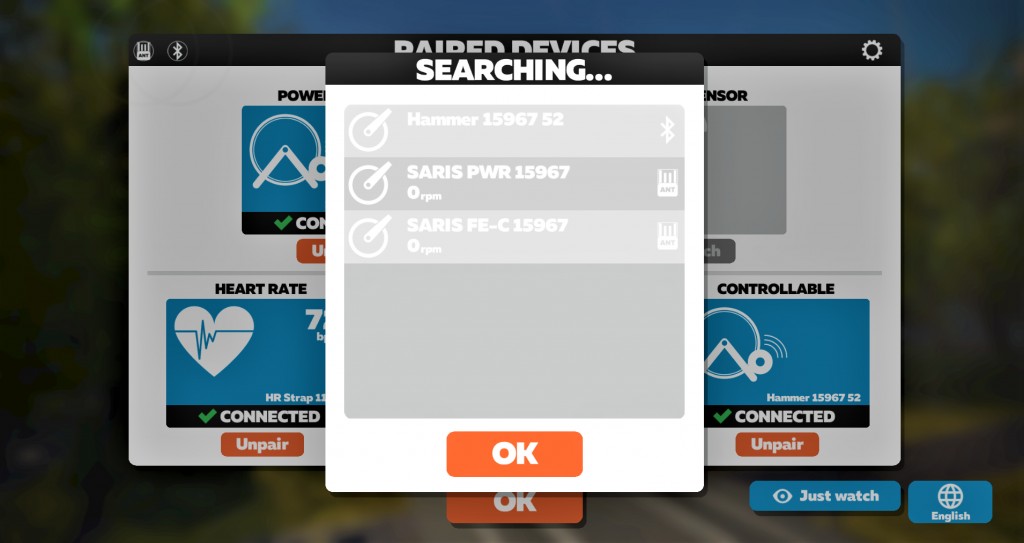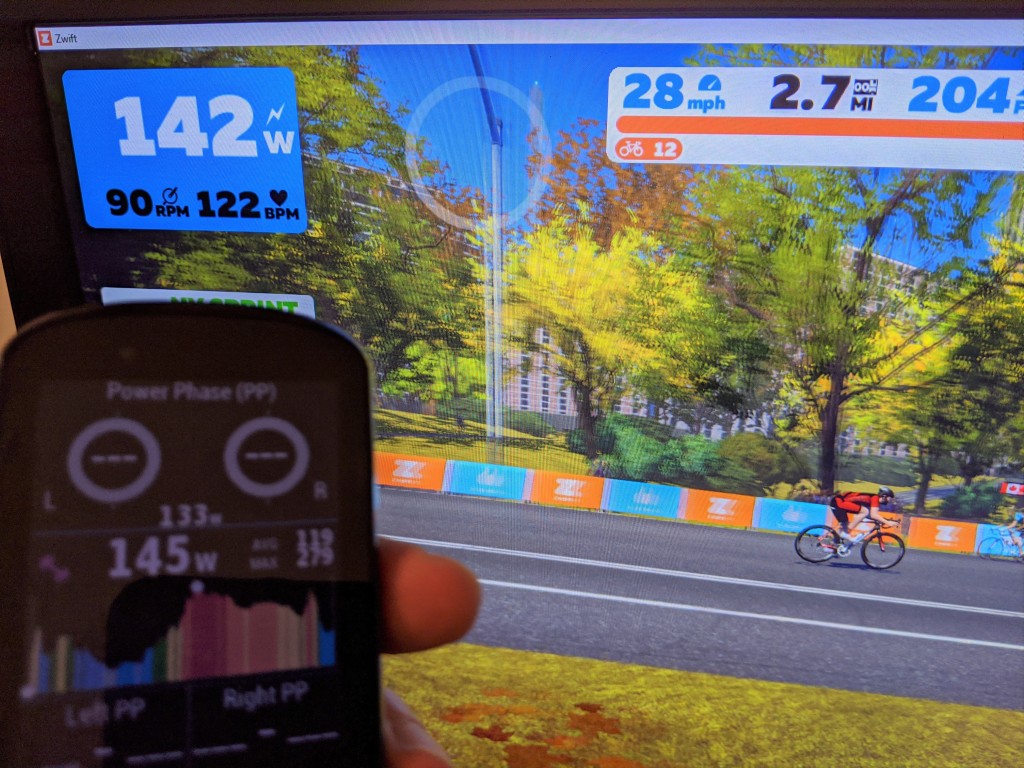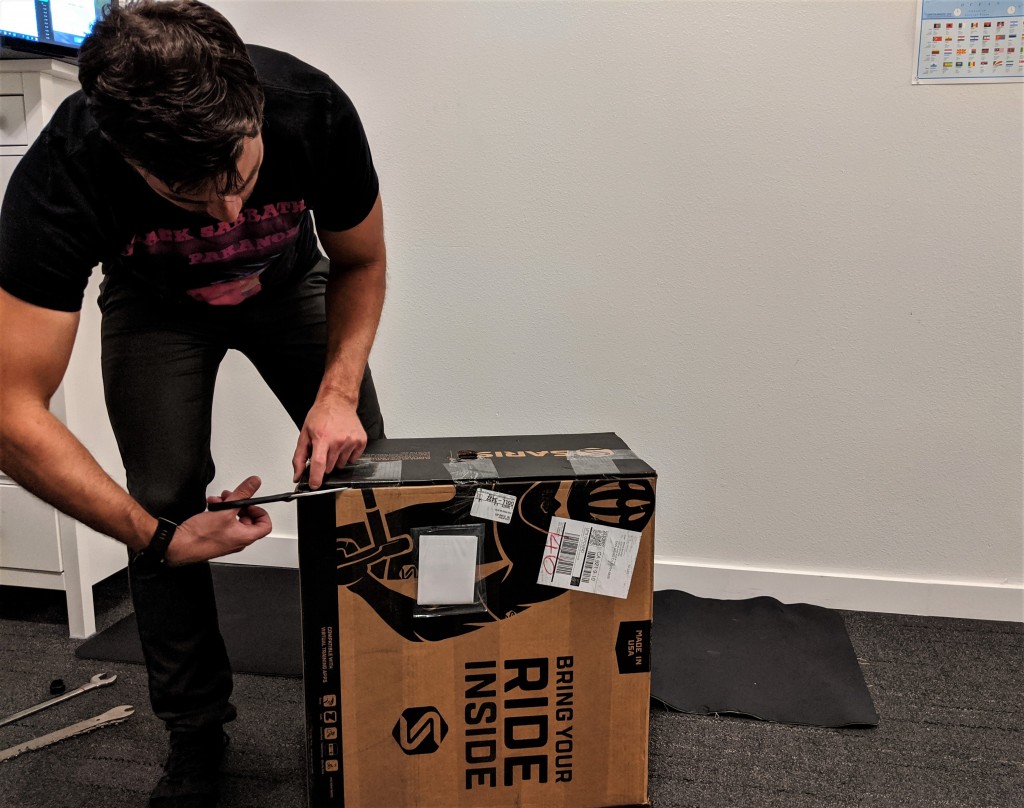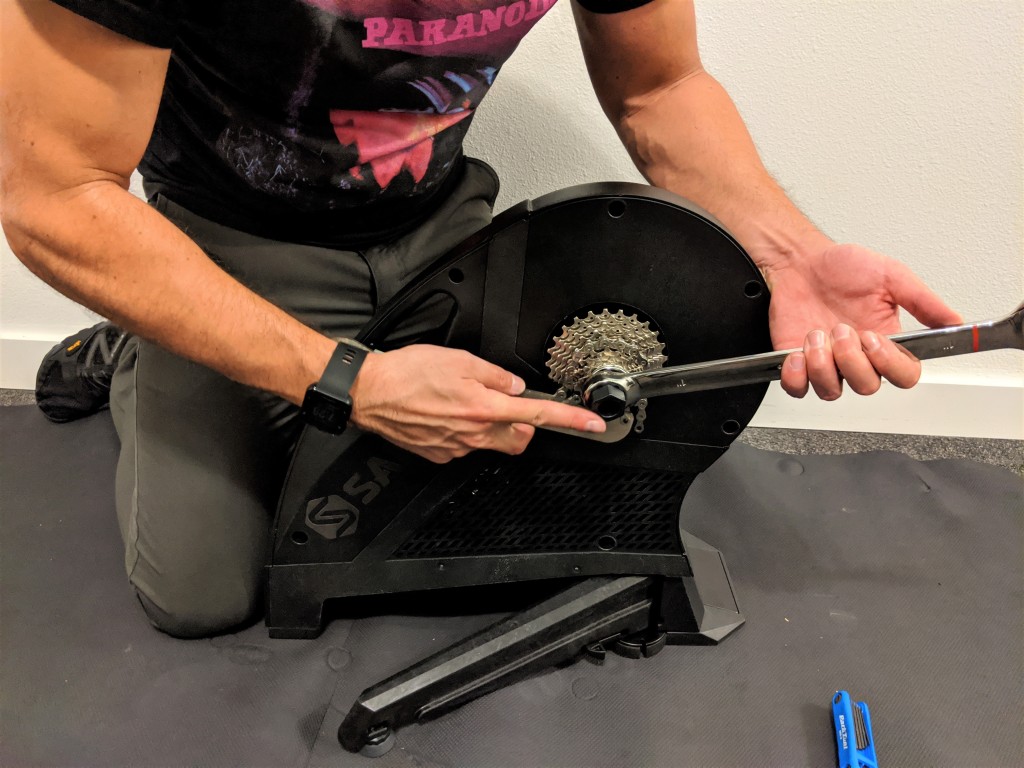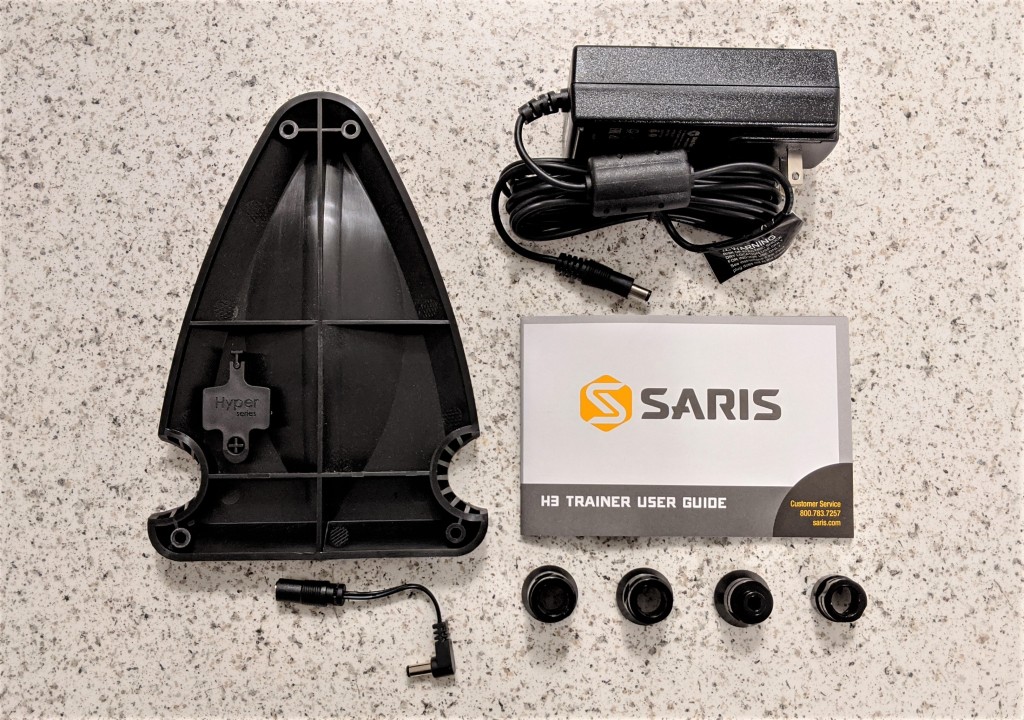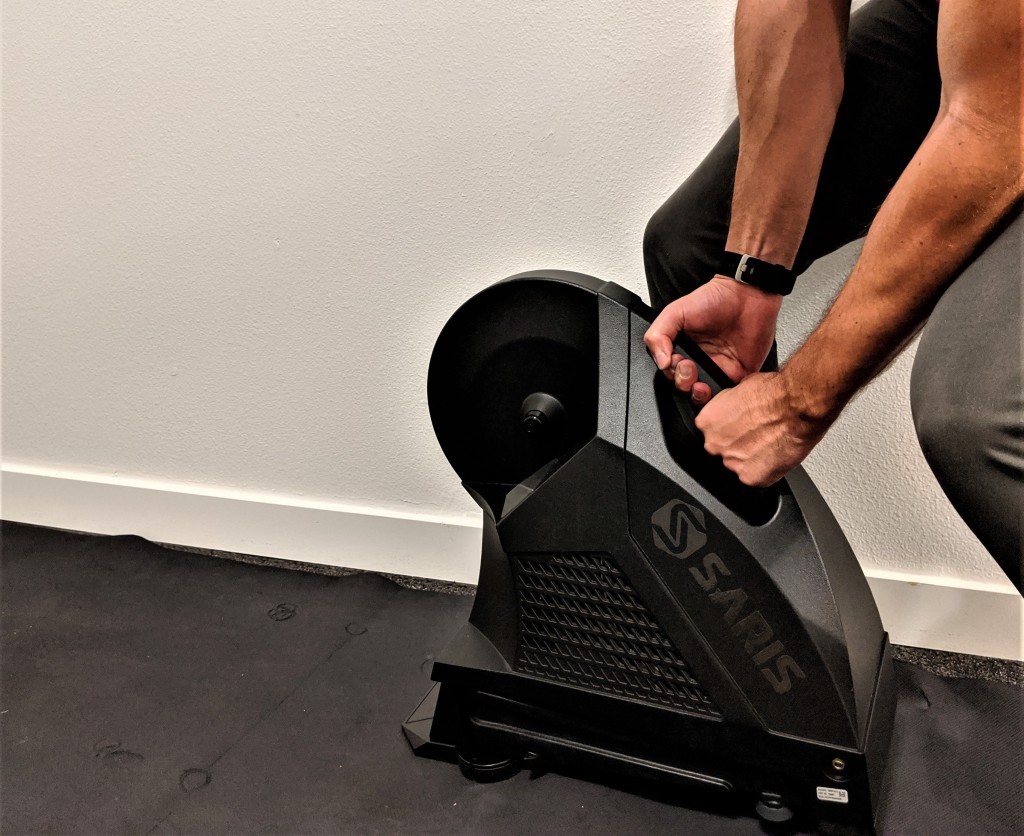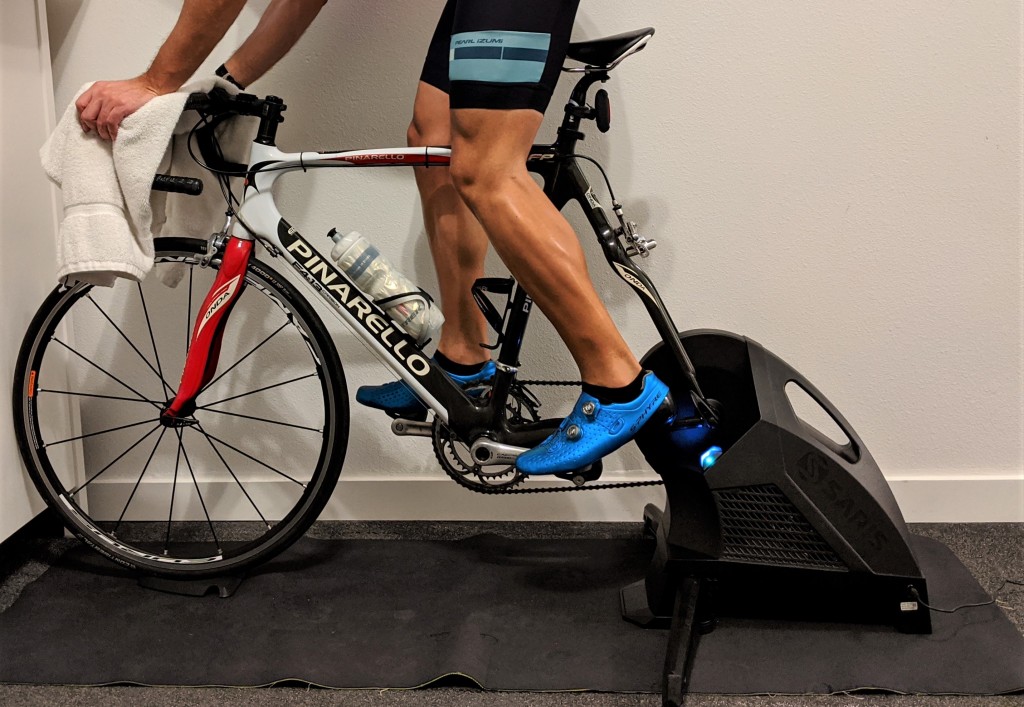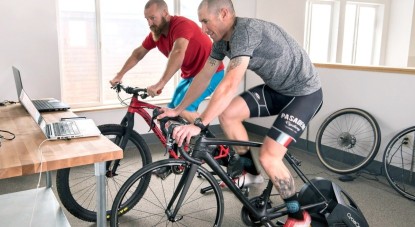Saris H3 Direct Drive Review
Our Verdict
Compare to Similar Products
 This Product
Saris H3 Direct Drive | |||||
|---|---|---|---|---|---|
| Awards | Best Bang for Your Buck Direct-Drive Trainer | Top Pick for Tire Drive | Notable for Standard Trainer | ||
| Price | $650 List Check Price at Backcountry | $500.00 at REI Compare at 3 sellers | $350 List Check Price at Backcountry | $370 List | $126 List Check Price at Amazon |
Overall Score  |
|||||
| Star Rating | |||||
| Bottom Line | Everything you want in a premium direct drive trainer for less than the high-end competition | This trainer brings premium performance to a more affordable price point | One of the best tire drive trainers, but still not as good as a direct-drive unit | This tire-drive trainer is our favorite, touting excellent performance at an affordable price | A super affordable but unrefined trainer for infrequent users |
| Rating Categories | Saris H3 Direct Drive | Wahoo Fitness Kickr... | Wahoo Fitness Kickr... | Tacx Flow Smart Tra... | BalanceFrom Bike Tr... |
| Connectivity and Power Accuracy (25%) | |||||
| Road Feel (25%) | |||||
| Design (20%) | |||||
| Setup (20%) | |||||
| Portability (10%) | |||||
| Specs | Saris H3 Direct Drive | Wahoo Fitness Kickr... | Wahoo Fitness Kickr... | Tacx Flow Smart Tra... | BalanceFrom Bike Tr... |
| Drive Type | Direct drive | Direct drive | Tire drive | Tire drive | Tire drive |
| Measured Weight | 47 lbs | 40 lbs | 38 lbs | 21 lbs | 19 lbs |
| Roll Out Time @ 200 watts | 58 seconds | 44 seconds | 45 seconds | 6 seconds | 5 seconds |
| Power Comparison | 1-3 watts, 1% | 3-5 watts, 2% | 10-15 watts, 5% | 10 watts, 5% | N/A |
| Communication Protocol | ANT+ FE-C, Bluetooth FTMS | ANT + FE-C, Bluetooth | ANT+ FEC, Bluetooth Smart | ANT+, Bluetooth | None |
| Dimensions L-H-W | 31” x 18.5” x 19.5” | 26" x 18.25" x 28.75" | 26.6" x 25.6" x 16.1" | 22"x22"x15" | |
| Storage Dimensions LxHxW | 8.5” x 18.5” x 19.5” | 20.75" x 7.5" x 20.5" | 22.2" x 16.1" x 9.7" | 22"x22"x15" | |
| Type of Trainer | Smart | Smart | Smart | Smart | Standard |
| Flywheel | 20 lbs | 12 lbs | 10.5 lbs | 3.5 lbs, Magnetic | 5 lbs, Magnetic |
| Axle compatibility | 130mm, 135mm compatible || Thru-axle available for 142mm and 148mm through CycleOps | 130mm and 135mm skewer, 142mm and 148mm thru axle | 130mm, 135mm compatible || 142mm adaptor available through Wahoo | 130mm and 135mm, adapters available for other widths | 130mm and 135mm || May need 3rd party adaptors for 142mm and 148mm |
Our Analysis and Test Results
We look at the machine and grade it against our performance measures to give you the best advice possible. It stands out for its premium features at a lower price than the top performers in this review.
Performance Comparison
Connectivity and Power Accuracy
Like most trainers released over the past few years, the Saris H3 uses ANT+ FE-C and Bluetooth FTMS to transmit data and allow you to control the trainer with training apps. If you use ANT+ to connect to a computer, you'll likely need to buy an ANT+ dongle to stick in one of the USB ports. It's a fairly cheap device, but be sure to have it beforehand. Newer phones and tablets are typically ANT+ capable; you might need to download a special driver.
We didn't experience any issues with connectivity or communication between the Saris H3 and any of our devices. We also couldn't find any serious reports of issues in this department. That dependability was also transferred to the power department. Saris claims to have +/- 2% accuracy, and our testing also bore that out. That's the same degree of claimed accuracy as the earlier version, but the actual performance is better in the new H3. The H2 almost always had the same degree of accuracy, but it had a problem with power spikes and dropouts. The H3 doesn't seem to have those issues. We stomped as hard as we could and couldn't replicate any of the problems from the H2.
No, it's not the most accurate machine on the market, but it's quite close. Taken together with its dependability and solid baseline of communication capabilities, it's safely among the best bike trainers out there.
Road Feel
We feel this is one of the best trainers on the market for road feel. It's probably the best ride you can get for the money. A few things go into this judgment. We look at the actual feel of pedaling and being down on the trainer - does it rock, or does it feel muddy? And we look at the performance of training programs.
Like butter, the pedaling is silky smooth both in free rides and ERG mode. To be fair, we like feeling a little buzz from some of the other trainers. It can make them feel a little more like you're outside getting some road noise in the seat and handlebars, but the smooth H3 feels quite nice sans vibrations. It's probably the quietest trainer out there, both in terms of auditory noise and vibrations.
It also does a good job of responding to power changes. That's either output, when you need to jump out of the saddle to kick out some power, or input when you're in ERG mode and the power requirement changes. The key here seems to be that it's a smoother transition than some other trainers. It's not quite a delay, but it gradually transitions, so you aren't all of a sudden trying to push out 400 watts at 20 RPMs. The only detractor here is that it seems slightly aggressive on downward adjustments when trying to match cadence and power in ERG. This is always a struggle as you tire and become sluggish, but there seems to be a bit more of a sloth penalty with the H3. It's certainly not as hurtful or punishing as some of the other smart trainers, but you'll need to keep an eye on it and manage it throughout your ERG training. Despite this minor annoyance, it would be hard to recommend many other trainers over the H3, especially if you're in the market for an upper-level trainer but aren't necessarily looking for a top-shelf Blue Label.
Design
The Saris H3 is one of our favorite designs. It's simple but versatile. Physically, it's practical. It has a handle for easy…uhh…handling. It's compact, so it's easy to move it out of the way when you're not using it. It uses foldable legs to expand its base and improve stability, which it does effectively. And when those legs aren't in use, you can securely stow the wheel stand in between the legs when they're locked down. On that note, it's also nice to have the hub set a bit lower, so you don't need a giant wheel stand to level the bike. The H3 comes with a wheel stand, but you could probably get away with just using a folded towel or something you don't mind getting a little road detritus on.
This model is also compatible with Shimano 8-11 speed (and, by extension, SRAM). We're a bit bummed they don't have a Campagnolo hub, but you should be able to use your Campy drivetrain on a Shimano cassette if you run 11-speed. No promises. On that note, you'll also need to buy your own cassette to put on the trainer. It fits the major axle standards, including 130 and 135mm quick releases and 142 and 145mm thru-axles.
This newer version is quieter than the previous one. It has a claimed noise level of 59 decibels, but we recorded it a little lower at 55 decibels at 20 miles per hour and about 200 watts. That made it one of the quietest trainers in our lineup - and it's a difference you can tell. Your neighbors and co-habitants will appreciate it. They've also made a few tweaks to their internal cooling system so that the motor doesn't overheat as the earlier models did. That also helps reduce the potential for data distortion or inaccurate readings.
You can kick out up to 2,000 watts at 20 miles per hour, and the H3 will take it like a champ. It also simulates inclines up to 20 percent, which should cover training for all but the absolute worst climbs. It has a claimed power accuracy of +/- 2%, and we couldn't find any serious departure from that in our testing.
Like most trainers in this latest generation, it uses ANT+ FE-C and Bluetooth FTMS communication protocols to transmit your performance data and control the unit. That gives it a good level of flexibility across operating systems and devices. Keep in mind that if you want to use ANT+, you'll likely need to buy a dongle to stuff in a USB port. Your phone or tablet might also be ANT+ capable if you want to train off an app and use your TV or computer for cinematic distraction.
Luckily, there are tons and tons of free and paid training apps that work across devices. The Saris H3 is certified by Zwift and BKOOL, and it also works with TrainerRoad, Kinomap, Rouvy, and virtually all of the other mainstream training programs.
Between the physical design aspects and tech/programmatic designs, it's hard not to be impressed with the H3. It's powerful, versatile, and simple to handle. We didn't even mention that it can be used as a progressive resistance trainer if it's not plugged in or that it has dummy lights to tell you if it's connected and transmitting. See? It's a clever machine.
Setup
The Saris H3 is also great because it doesn't take much to set it up. And of course, if you want to win our hearts, make it as easy as possible to get on and go. The only assembly that's required is the cassette. That's pretty unavoidable for direct-drive trainers. A lot of them used to come with cassettes pre-installed, but it's just too wasteful when so many riders prefer to use different cassettes.
So to get yourself started, you'll need a chain whip, a lockring tool for your cassette, a wrench to fit that tool, and probably some latex gloves, especially if you're playing with a used cassette. The H3 comes with a hub that fits Shimano and SRAM 8-11 speed, so there should be no need for any spacers. If you use a thru-axle, pop in the appropriate adapter from the goody bag, and you're ready to mount.
Simply remove your rear wheel and treat the trainer as a new wheel. Make sure to shift down to your smallest ring on the back before removing it so it's easier to align with the new cassette with the dropouts centered. Tighten down your skewer or thru-axle as you would out in the wild. Then plug the trainer in and get your computer, tablet, or phone set up with your preferred training app. Your machine will already be broadcasting Bluetooth or ANT+; all you have to do is locate it on your device and sync it.
We had zero problems with either syncing or data transfer. The only real pain we had was with calibration. Not that there were any problems with it, just the fact that we had to do it at all. You'll need to warm the machine up for about 10 minutes, and then you can run the calibration with some confidence, and you're set to ride. The best practice is to do this once a week. It's not a serious mark against this trainer because you have to do calibrations for almost all trainers, except some Tacx models.
Portability
When we look at portability, we're considering what it takes to pack this thing up and take it out on the road with you and just get it put up and out of the way when you're not using it. We consider it to be one of the more convenient models.
Its legs fold in nicely and are compact-like, so it's easier to stack and stow. Some other models also have legs that will fold, but their shape still makes the machine a little awkward. Of course, the handle is great too. You can never overestimate the utility of a good handle.
The area where it's not incredibly convenient is its weight. It's 47 pounds, so if you were planning on flying with it or mailing it somewhere to meet up with it later, you're going to end up paying a bit more than you'd like. Plus, it's just a hassle to lift and move around on the floor, never mind that the weight improves riding performance and stability…
Should You Buy the Saris H3?
Depending on your goals, the H3 is a potential option, to be sure. This higher-end choice gives you a lot for a price lower than the other premium options in a compromise that could save you a few hundred dollars. This product is a premium trainer that offers good responsiveness and smooth, high-power accuracy.
What Other Bike Trainer Should You Consider?
The Wahoo Fitness Kickr Core is another model to consider. It comes at a lower price point with a higher overall score across the metrics. For many hundred dollars more list price, the Tacx Neo 2T Smart did earn a better overall score and offered better performance, connectivity, and setup.


